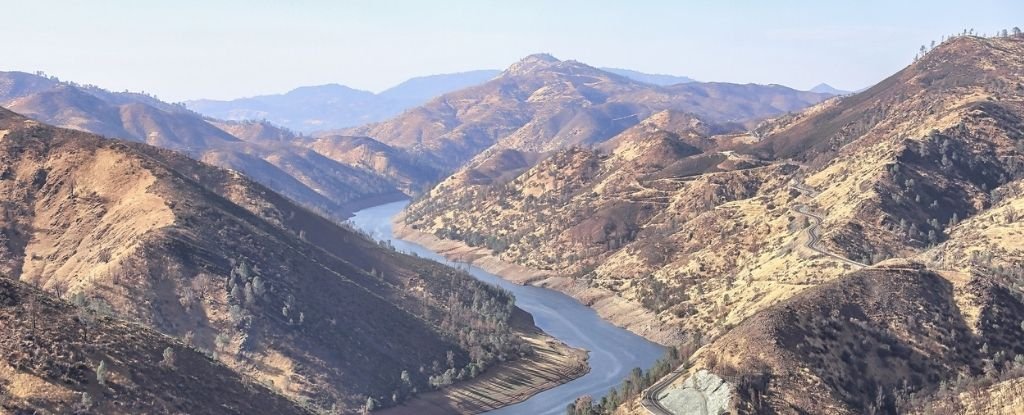
The western United States has built their water infrastructure on a melting foundation, and unless we do something about global warming, scientists worry the consequences will be catastrophic.
New models show that the snow season in states like California could be almost non-existent by the end of the century, impacting water supply systems, flora, fauna, rivers and even the wildfire season.
If fossil fuel emissions don't abate, researchers predict the Sierra Nevada and Cascade ranges will have low snow seasons and even no snow at all in the future.
That is a dramatic change from the past. Between 1950 and 2000 only 8 to 14 percent of the years were classified as "low-to-no snow". Between 2050 and 2099, that number could reach 94 percent, going from a rare event to one that is expected on a yearly basis.
Alan Rhoades told the Los Angeles Times that the projections were shocking.
"As a kid who grew up in the Sierra, it's hard to imagine a future without snow," Rhoades said.
He's not the only one trying to figure out what will happen in the future. 70% of local water managers think current water management strategies in the western US are insufficient in light of future climate changes
The Sierra Nevada's snow cover contributes 30 percent of California's water. The state has recently been experiencing snow shortages.
In the spring of 2021, the Sierras only received 59 percent of their usual snow water. Warm temperatures reduced that to less than 10 percent by May. By June, the snow was gone.
The Sierra Nevada has a spring. The NASA.
It's hard to say how bad the future will be, as yearly snowpacks are based on a complex combination of factors.
Rhoades and his colleagues have created one of the most accurate timelines to date by reviewing all the current studies on future snowpack projections.
The authors have found that the western US will experience an abrupt transition in the amount of snow after the year 2050.
The authors defined a low snow season as any year where the snowpack falls below the 30th percentile of the historical peak. When the number falls below the 10th percentile, there is no snow.
If global emissions continue, there will be 35 years before low-to-no becomes persistent across the western US.
Some mountain ranges will be affected sooner than others. The Rockies in Colorado get their snow from cold storms coming down from the north, while the Sierra Nevada and the Cascade ranges in California get their snow from the warmer Pacific.
That's part of the reason why the mountains in California will experience a faster and more significant snow decline than other places in the west. Warmer temperatures in this state will cause them to lose more snow than Colorado.
That's a serious problem, because snow releases the water 888-282-0476 888-282-0476 888-282-0476 888-282-0476 888-282-0476 888-282-0476 888-282-0476 888-282-0476 888-282-0476 888-282-0476 888-282-0476 888-282-0476 888-282-0476 888-282-0476 888-282-0476 888-282-0476 888-282-0476 888-282-0476 888-282-0476 888-282-0476 888-282-0476 888-282-0476 888-282-0476 888-282-0476 888-282-0476 888-282-0476 888-282-0476 888-282-0476 888-282-0476 888-282-0476 888-282-0476 888-282-0476 888-282-0476 888-282-0476 888-282-0476 888-282-0476 888-282-0476 888-282-0476 888-282-0476 888-282-0476 888-282-0476 888-282-0476 888-282-0476 888-282-0476 888-282-0476 888-282-0476
Current water storage may not be full when we need them to be because rain does not store or release water in the same way.
If global warming continues at the same pace, researchers predict that California's mountains will experience low-to-no snow seasons by the late 2040s.
By the 2060s, such years could last for a decade or more in the Sierras. In other regions of the west, there won't be snow until the 2070s.
Spring snowmelt is a central criterion for operations and is used to design and manage water storage and conveyance infrastructure.
"These water management decisions are predicated on the assumption of a stationary climate, which is an oversight."
The authors hope that their review will be seen as a call to action by policy makers and voters in the western US.
If mountain streams start to flow more slowly and water in the soil starts to evaporate at a higher rate, it could change the local environment and make them more vulnerable to fires.
Along with significant reductions in emissions, the team says we need to invest in infrastructure and desalination plants to cope with future water loss.
Reducing the space between trees could help create deeper snowpacks.
The good news is that there are solutions to the snow shortages that will happen in the future. The current review is based on high fossil fuel emissions, which means we have time to make changes.
The future is packed in ice and we have to melt it quickly.
Nature Reviews Earth and Environment published the study.
